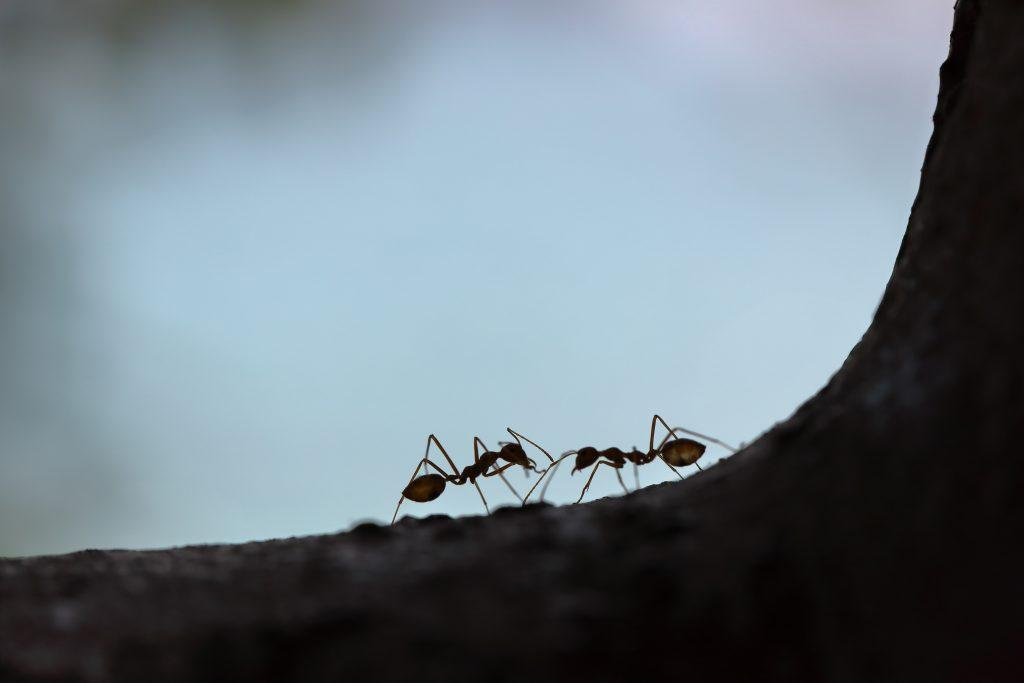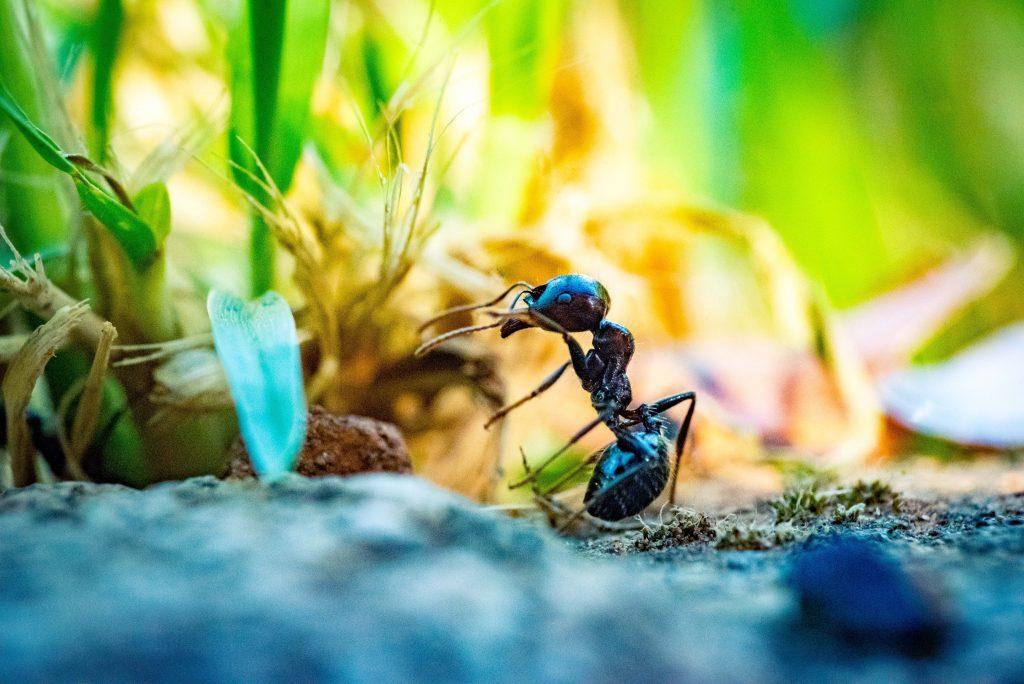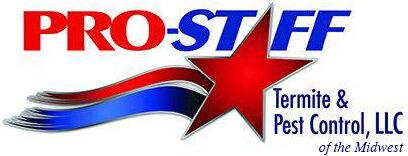With fall in full swing, a whole host of seasonal pests may be marching towards your home. Among these unwelcome guests is the carpenter ant, an insect that burrows into wooden objects to create its nests and tunnels. Pro Staff, the leaders in Des Moines pest control, want you to know how to identify this household nuisance and more importantly, how to kick them out.

Physical Appearance
The simplest method you can use to identify carpenter ants is observing the physical appearance of the insects themselves. Carpenter ants have a few characteristics that set them apart from your average black ant. They are relatively large in size — up to 5/8 of an inch in length — and are generally black or dark brown in color. Carpenter ants are also noted for their wings, rounded thorax, and slightly bent antennae. If you discover flying, winged ants in your home, there is little doubt that a carpenter ant invasion has begun.
Signs of an Infestation
If you suspect your home may be hosting carpenter ants, but you can’t see the bugs themselves (or you just don’t want to get too close to them!), you can search instead for their calling cards around your home. Carpenter ants can wreak havoc on your home by chewing through anything made of wood. If you notice small piles of wood shavings near your wooden furniture, that could be evidence that carpenter ants have been chowing down. These insects also like to hide in the walls of homes and burrow into wooden support beams. You can listen for ants in your walls by gently tapping or knocking while you press your ear to the wall; tapping against the wall can disturb any ant nests that are hidden within. If ants are stowing away behind your drywall, you should hear the rustling sounds of insects moving around when you knock.

Treatment
So, you’ve spotted the telltale winged ants and wood shavings piles and uncovered your home’s carpenter ant infestation. Now what? Calling a pest control professional should be your first step. DIY attempts to control carpenter ant populations often don’t get rid of the whole colony. If you can’t locate and destroy every nest and burrowing site, the ants will come back. The pest removal pros at Pro Staff can help you find the ants’ nests and burrows and treat them with industry-grade chemical insecticides to make sure the entire colony is taken care of.
Don’t let carpenter ants overstay their welcome in your home! Call the Des Moines pest control experts at Pro Staff to get a quote for pest removal today.
